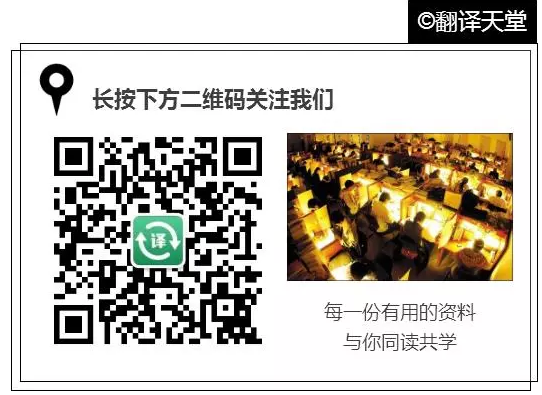假冒伪劣曾令国产葡萄酒备受诟病。而现如今,中国人对葡萄酒的品味已经大幅提升,中国葡萄酒也在传统欧洲葡萄酒产地大受欢迎。这其中,国产葡萄酒经历了怎样的蜕变呢?
China’s strides in the wine race is yielding robust results
中国葡萄酒变得可口了
It is unfortunate that Chinese wine drinkers seem to be deserting the produce of their own vineyards for imported alternatives. In my experience, the quality of the best Chinese wine has recently turned a corner — in the right direction.
不幸的是,中国的葡萄酒消费者似乎正抛弃国产葡萄酒,转向进口酒。根据我的经验,中国最佳葡萄酒的质量最近出现了变化——向着好的方向变化。
For years, it looked as though Chinese producers put more effort into the packaging than the liquid. After all, until fairly recently the great majority of Chinese consumers had no experience of what wine should taste like. So the many fraudsters, the sort who labeled questionable concoctions as “chateau Lafeet” or “Bordeaux Port”, could get away with murder.
在多年期间,中国葡萄酒酿造商好像把更多的努力放在包装上,而非葡萄酒本身。毕竟,直到不久以前,绝大多数中国消费者没有品尝过真正的葡萄酒,不知道它们应该是什么滋味。因此,很多骗子在品质可疑的酒的瓶子上贴上“Chateau Lateet”或“Bordeaux Port”之类的山寨标签,竟然也能蒙混过关。
The rampant fakery of old, as well as food safety scandals, presumably played a part in encouraging the country’s wine consumers to see imported wine as a more reliable product. It also tends to be priced much more sensibly. China’s wine producers are apparently still influenced by old gifting habits, with too many overpriced bottles aimed at providing a patriotic official with a domestically produced status symbol rather than a good-value drink.
肆无忌惮地假冒陈年佳酿,以及多起食品安全丑闻,想必在一定程度上促使中国的葡萄酒消费者把进口葡萄酒视为更可靠的商品。进口酒的定价也往往理智得多。中国的葡萄酒酿造商显然仍受到过去送礼风气的影响,太多定价过高的葡萄酒旨在为“爱国”官员提供一种国产的身份象征,而非一款物有所值的饮品。
The great majority of the imported wine is fairly ordinary stuff. France in general and Bordeaux in particular used to be the model for all wine to aspire to in China, but imports from Chile and Australia have surged in the past year or two, thanks to friendly trade agreements. Spain, too, offloads vast quantities of incredibly cheap wine to China.
绝大部分进口葡萄酒的品质都相当普通。法国,尤其是波尔多地区,曾经是所有葡萄酒希望在中国效仿的模板,但过去一两年,在友好的贸易协定推动下,来自智利和澳大利亚的进口葡萄酒飙升。西班牙也向中国出口了大量葡萄酒,价格低廉得令人难以置信。
Meanwhile, at the top end of the market, Chinese consumers used to be seen as ignorant stooges by the many exporters who cast China as their potential saviour in a sluggish European wine market. But they are becoming increasingly sophisticated and knowledgeable. The global leader in wine education, the London-based Wine & Spirit Education Trust, has almost as many Chinese students as British — and the University of Bordeaux is teeming with them.
与此同时,在市场高端,中国消费者曾经被很多出口商视为不识货的小卒(这些出口商现在把中国列为低迷的欧洲葡萄酒市场潜在的救星)。但他们正变得愈发精明和博学。葡萄酒教育领域的全球领导者、总部位于伦敦的Wine & Spirit Education Trust的中国学生与英国学生几乎一样多,而波尔多大学(Université de Bordeaux)也有大批中国留学生。
Chinese producers are nothing if not determined and efficient. Last year, the country’s total vineyard area overtook France’s to become the second biggest in the world, after Spain’s. Often with local government help, producers have invested heavily in new vineyards and built wine “chateaux” more fantastic, quite literally, than any in the Loire or Hollywood, all aimed squarely at Chinese wine tourists.
中国葡萄酒酿造商的特点是坚定和高效率。去年,中国葡萄园总面积超过法国,位居世界第二,仅次于西班牙。葡萄酒酿造商往往获得地方政府的帮助,他们大举投资于新的葡萄酒园,还建造了“酒庄”,比卢瓦尔河谷或好莱坞的任何酒庄都更加风景如画,吸引着中国的葡萄酒游客。

If wine imports continue their dramatic growth, then Chinese exports will have to increase considerably. So far they have been modest, but UK consumers have apparently shown more interest than expected in such Chinese bottles as have so far been presented to the customers of Sainsbury’s supermarket and the off-licence chain Wine Rack.
如果葡萄酒进口的戏剧性增长趋势延续下去,那么中国的葡萄酒出口将不得不显著增长。迄今为止,中国的葡萄酒出口增速温和,但英国消费者显然对中国葡萄酒显示出了超出预期的兴趣,中国葡萄酒已在英国塞恩斯伯里超市(Sainsbury’s)以及连锁酒类商店Wine Rack上架。
There is one potential handicap, however. The countries that have had the most success in establishing export markets in the modern era have had a USP. New Zealand has carved a niche for the world’s most valuable per-bottle prices by offering uniquely, refreshingly fruity Sauvignon Blanc. Australia saw massive success with its friendly Chardonnay and rich Shiraz. Argentina has blitzed North America with its bold Malbec.
不过,还存在一个潜在的阻碍。那些在现代开拓出口市场最成功的的国家都有一个独特卖点。新西兰通过提供独特的果香沁人心脾的长相思(Sauvignon Blanc)白葡萄酒,打造出了世界单瓶价格最贵的葡萄酒细分市场。澳大利亚受人喜爱的霞多丽(Chardonnay)和气味馥郁的西拉(Shiraz)获得了巨大成功。阿根廷大胆的马尔贝克葡萄酒(Malbec)在北美市场风靡一时。
But Chinese vineyards are dominated by the red Cabernet and Merlot grapes that grow in abundance all over the wine world — not least in Bordeaux, which produces massive quantities of inexpensive examples every year, typically made by co-ops that do not have the debt that recent investors may be saddled with.
但中国的葡萄园主要种植红色赤霞珠(Cabernet)和梅洛(Merlot)葡萄,这些葡萄在所有葡萄酒产地大量种植,特别是波尔多地区,每年生产大量不贵的葡萄,一般由合作社生产,它们没有近期投资者可能背负的债务。
The reaction of many Chinese producers to market trends has been to acquire foreign vineyards and wineries. Chinese investment in Australian wine production, in particular, has recently gathered pace, and current estimates are that almost 200 (relatively minor) Bordeaux chateaux are in Chinese hands.
很多中国葡萄酒酿造商对市场趋势的反应是收购外国葡萄园和酒庄。特别是,中国在澳大利亚葡萄酒酿造领域的投资最近加速,同时据目前估计,近200个(规模相对较小)波尔多酒庄由中国投资者所有。
Chinese buyers were out in force once more at the primers’ tastings in Bordeaux at the beginning of this month. One thing seems sure: Chinese influence in the world of wine will only increase.
4月初,中国买家再次在波尔多期酒品鉴会上大举出动。有一点似乎是肯定的:中国在葡萄酒世界的影响力只会上升。











